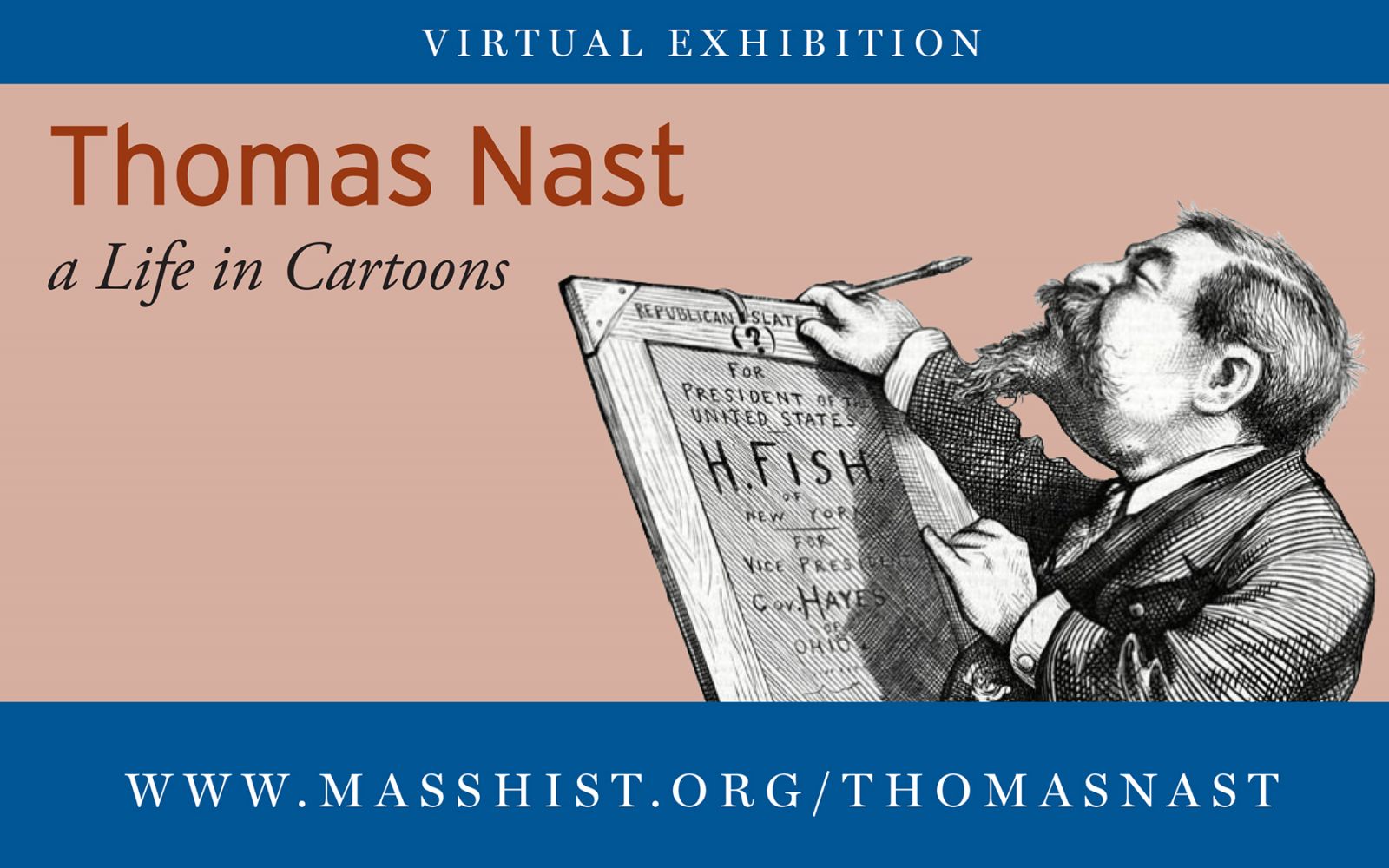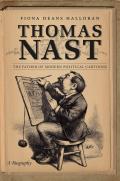The “Thomas Nast” Art Team, Part 3
Yesterday’s Boston Globe praised the approach of the Massachusetts Historical Society’s “Thomas Nast: A Life in Cartoons” online exhibit: “In a nice twist, the exhibition doesn’t emphasize Nast’s own work (though it offers links to many of his cartoons). Instead, nine contemporary cartoonists illustrate episodes from Nast’s life.”
I discussed six of those artists in the two preceding postings. Here’s the rest of the team.
Under Harper’s Weekly publisher Fletcher Harper, Nast had editorial freedom in the topics he chose and how he approached them. That often put him at odds with the magazine’s political editor, George William Curtis, who was more gentle and loyal to the Republican Party as a whole rather than just President U. S. Grant. We illustrated that conflict in what I later realized was yet another Nast-speaking-to-his-editor scene. But hey, his job was speaking to editors, and it’s a scene I know well.
The line “hit the enemy between the eyes” line came straight from Nast. The historical society understandably wanted more Massachusetts content, so this cartoon includes Nast’s unflattering caricatures of two Bay State politicians, Benjamin Butler and Charles Sumner.
On top of his political cartoons, Thomas Nast’s biggest contribution to American culture was to popularize a certain look for Santa Claus. He had grown up with a German Christmas tradition of “Pelze-Nicol,” which he used to illustrate the Dutch tales of ”St. Nick” preserved in New York. Nast’s Santa was round and jolly, the size of a child, and swathed in fur.
For years Nast drew black and white pictures of Santa Claus for Harper’s. They became so popular that McLoughlin Bros., a pioneering picture-book publisher, offered to publish a book of Nast’s pictures converted to color lithographs. That technique approximated brown by printing black lines and highlights on a red field, with the result that the fur tinged toward red—and a red suit became what we expect Santa to wear.
Dan Mazur produced the cartoon of a McLoughlin brother showing Nast his page proofs for Santa Claus and His Works. As usual, he loaded it up with historical detail, hunting for the right sort of press and Pelze-Nicol himself.
Dan was also one of the organizers of this project, and he was one of the founders of both the Boston Comics Roundtable and the Massachusetts Independent Comics Expo. His latest comic as a publisher is the Boston Powers series, and his upcoming comic as an author-illustrator is Lunatic.
After losing his editorial independence, Thomas Nast left Harper’s Weekly. He launched his own magazine, which lasted only a few months. He went on the lecture circuit, but that was exhausting. He produced history paintings looking back on the Civil War. His investments went bust, leaving him in a precarious financial state.
For our final cartoon, I imagined a cheeky take on the moment when Nast accepted a post in the U.S. diplomatic corps under Theodore Roosevelt. Artist Nick Thorkelson chose to render that in three panels to enhance the timing of the vaudeville dialogue. Unfortunately, it wasn’t so funny when Nast caught yellow fever only a few months after arriving at his first assignment. (We didn’t illustrate that moment.)
Nick Thorkelson has made political cartoons for the Boston Globe and many other outlets. One of his specialties is graphic biography, with his latest being Herbert Marcuse: Philosopher of Utopia (2019).
So that’s our look at the career of American cartoonist Thomas Nast, from his childhood immigration to his death overseas.




